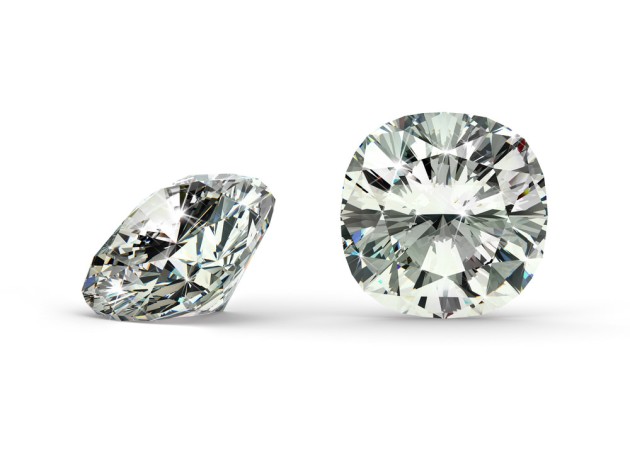Cushion Cut a Modern Choice

Many people see the popular cushion cut as a modern, technological advance. In fact the opposite is true. The vast majority of cut diamonds in the 19th century were cushion cuts and though replaced by the more technical cutting inventions the Cushion cut still appeals to those looking for a vintage or antique style.
Also known as the ‘Pillow’ or ‘Candlelight Cut’, the cushion cut was named as the rounded corners on the square or rectangular diamond resembled a cushion. The larger number of facets in the cushion cut allows for a high level of light dispersal and can give an appealing crushed ice look, which is widely sought after as an effect. The high number of facets also provides a wide spectrum of possible colours.
The cushion modified brilliant cut is created by adding an extra row of facets to the structure and this style has been known to reduce the shadowing from inclusions or flaws within the diamond itself.
Many of the world’s most famous diamonds and gems are cut in the cushion style to produce stunning colours and scintillating sparkle. For instance the Hope diamond, Regal diamond, Tiffany diamond and the Logan Sapphire are all cushion cuts. Indeed Tiffany have a cushion cut focus in their signature wedding ring range.
Many specialist designers can create great pieces from cushion cuts. Speak to a jewellery designer, such as online specialist ComparetheDiamond.com (formerly diamondgeezer.com) for advice on the best cut for you. They offer a design and manufacture service, using their 50 years expertise, and, as the service has a 30 day money back guarantee, or exchange or retweaking, you can buy with full confidence.
ComparetheDiamond.com (formerly diamondgeezer.com) also stock a huge range of cushion cut diamonds in many styles, settings a metals styles, including white, rose and yellow gold.

